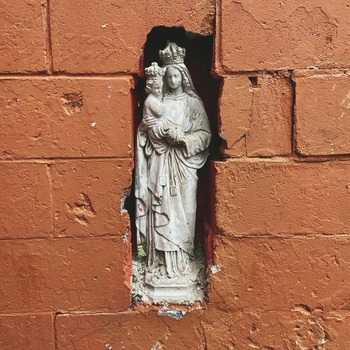Search
Go to the Mountain!
-
 July 8, 2025The Feast of Our Lady of Mount Carmel is fast approaching on July 16. It is a feast day that has so much to teach us as we continue on our pilgrim journey through this life.
July 8, 2025The Feast of Our Lady of Mount Carmel is fast approaching on July 16. It is a feast day that has so much to teach us as we continue on our pilgrim journey through this life.
First, a bit about the history of Mount Carmel. Mount Carmel is a mountain range in northern Israel extending from the Mediterranean Sea to the southeast. It is made famous in the First Book of Kings for the contest of the prophet Elijah against the prophets of the false god Baal. Carmel means “Garden of God” from the lush vegetation on parts of the mountainous slopes. In the twelfth century hermits devoted to the Blessed Virgin Mary lived on Mount Carmel where they bult a chapel in her honor. They maintained a presence there until they were forced out by then Muslim invasions of the late 13th century. They then migrated to Europe but were floundering there. St. Simon Stock who was the Father General of the Order experienced a vision of Our Lady of Mount Carmel and the Infant Jesus on July 16, 1251 during which she gave him a scapular (a garment that goes over the head and falls in front and in back of the wearer) as a sign of her protection and their renewed dedication to her. The small Brown Scapular that has remained so popular among the faithful through the centuries since is taken from this larger scapular. When Our Lady entrusted the scapular to St Simon Stock, she promises that she would protect the Order and would ensure its future.
Second, what does this devotion to our Lady of Mount Carmel mean to us today? Those who are Carmelite nuns, friars, hermits or laity devoted to her find in her the perfect model of the interior life of prayer and contemplation, a model of virtue as the Mother of God, and powerful intercessor and protectress in life.
Father Gabriel of St. Mary Magdalene de’ Pazzi taught that devotion to Our Lady of Mount Carmel indicates “a special call to the interior life, which is preeminently a Marian life. Our Lady wants us to resemble her not only in our outward vesture but, far more, in heart and spirit. If we gaze into Mary’s soul, we shall see that grace in her has flowered into a spiritual life of incalculable wealth: a life of recollection, prayer, uninterrupted oblation to God, continual contact, and intimate union with Him…those who want to live their devotion to Our Lady of Mount Carmel to the full must follow Mary into the depths of her interior life.”
This means for us that we look to the woman who brought God into the world by her submission to God’s call to conceive Him in her virginal womb. We entrust ourselves the woman who will bring us to God as we seek her intercession and follow her example of prayer and total dedication to Christ Jesus.
Third, we remember that while Carmel means “Garden of God”, Our Lady is often referred to as “Enclosed Garden” indicating her conceiving Jesus while remaining a virgin. That is to say that she is the Garden of God because the Fruit of her womb is the Savior who will be the Fruit of redeeming love that will hang upon the Cross, the Tree of Life. She is so to speak the gardener par excellence bringing forth the Jesus the Bright Flower of our redemption. By her intercession, she helps to plant in the garden of our souls the grace of God that unites us with her Son Jesus.
The first two stanzas of the famous prayer to Our Lady of Mount Carmel, the Flos Carmeli (Flower of Carmel) captures beautifully her role as both Garden of God and gardener.
Flower of Carmel,
Tall vine blossom laden;
Splendor of heaven,
Childbearing yet maiden.
None equals thee.
Mother so tender.
Who no man didst know,
On Carmel’s children
Thy favors bestow,
Star of the Sea.
So, dear friends, as we prepare for the Feast of our Lady of Mount Carmel, let us go to the Mountain of Carmel, let us go to the Garden of God and find there a Mother who intercedes, guides, helps, protects and brings us to Jesus!
Most Reverend William J. Waltersheid
Auxiliary Bishop of Pittsburgh
